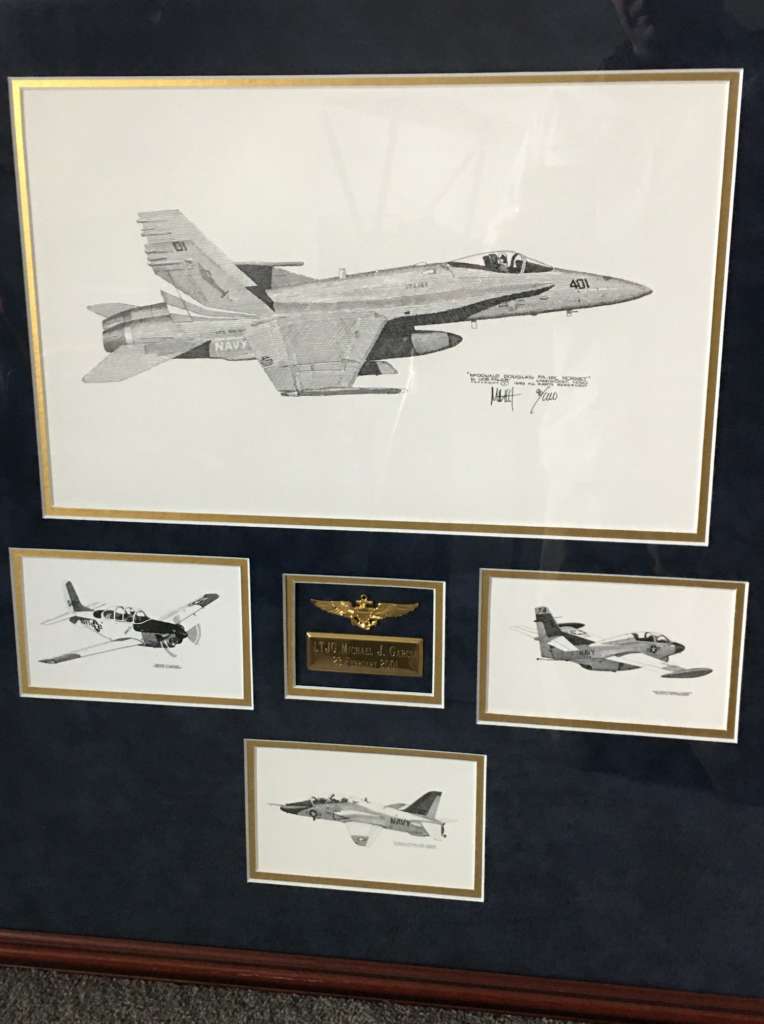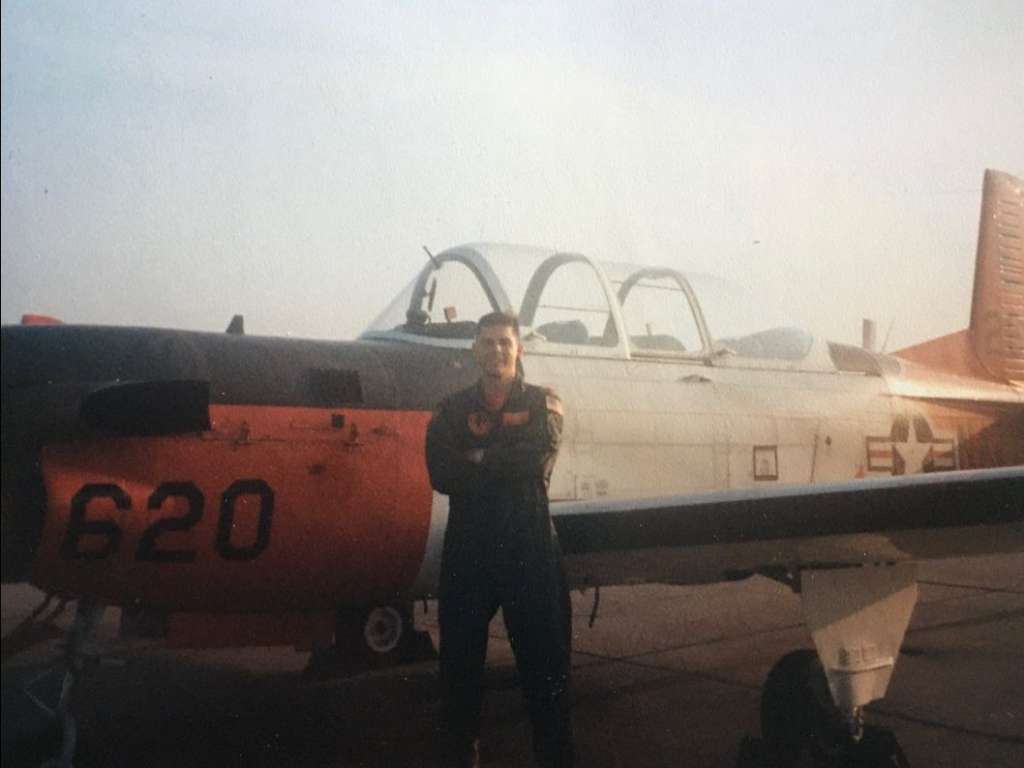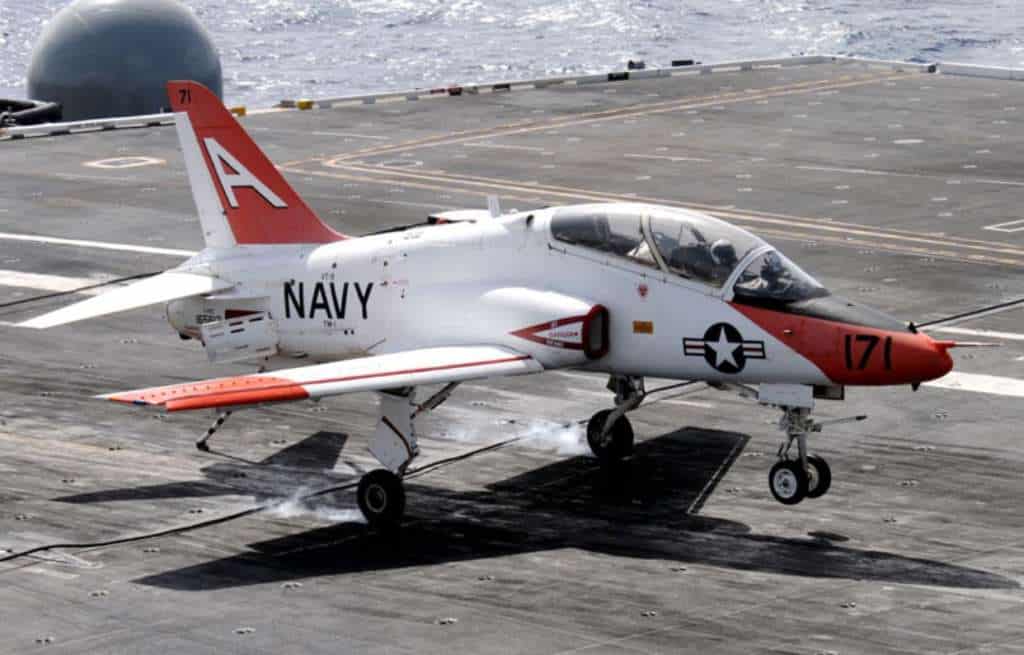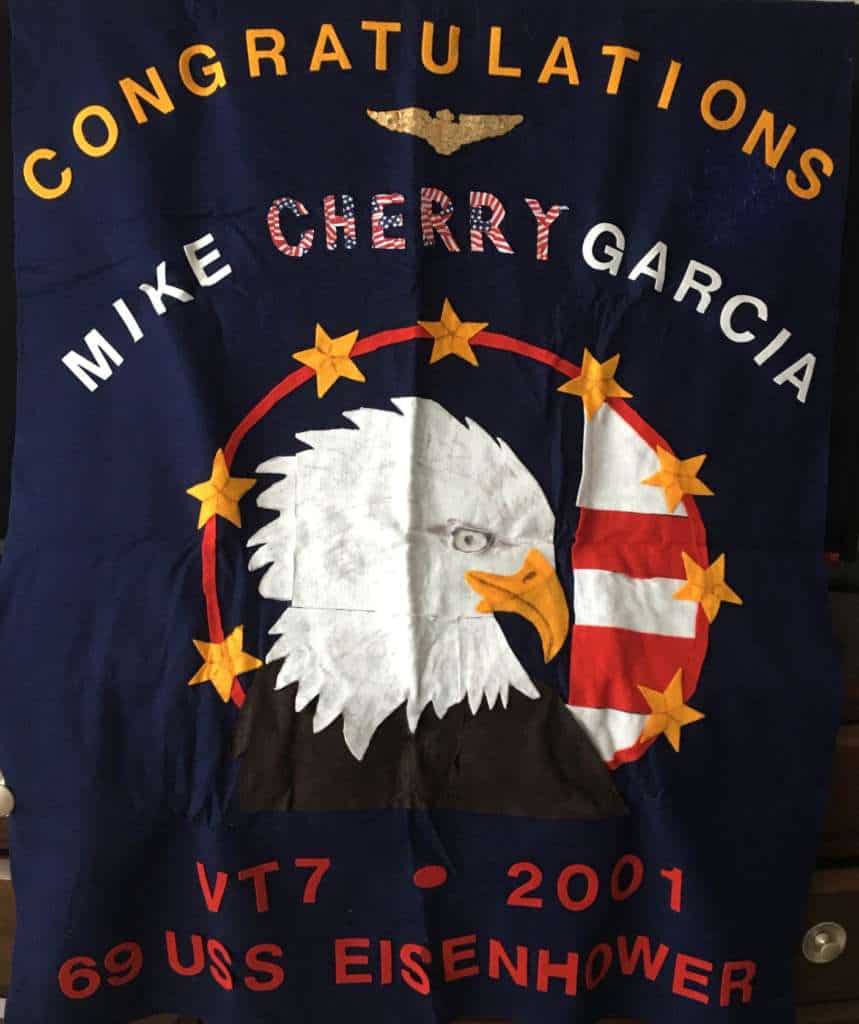Here is the third chapter in a series that will let you get to understand who I am a little better:
Chapter 3: Time to Fly! (1999-2001)
From 1999 until 2009, I had the privilege of wearing steel-tipped boots and a helmet at work everyday serving my country as a Naval Aviator. My journey as a military combat pilot began with flight school in January of 1999. The two years of training were as difficult and intense as expected, but flight school was an amazing experience and a very rewarding period of my life. The academics were graduate level and the process of learning to fly military aircraft was complex on several levels. I enjoyed the exhilarating experience of flying everyday, but also woke up every morning with the reality that it may be my last day alive on this beautiful planet.
There were effectively 3 phases to flight school:
1. Primary training
I started in a T-34C, a turboprop 2-seat aircraft worth roughly $5 million that would do about 250 mph. Before I set foot in the T-34, I had never piloted an airplane before except for one hour in a Cessna with a friend. This turned out to be an advantage because I was a clean slate with no bad habits (sounds an awful lot like a fresh face in politics eh?). This phase was focused on teaching the basics of flying, navigating, and communicating, along with survival skills that would prevent catastrophes in the sky. This stage of training in Pensacola lasted a year and I graduated #1 in my class.
2. Intermediate Training
This phase moved from the T-34 to the T-2C twin jet worth about $10 million. Equipped with an ejection seat, an oxygen mask and lots of power, I felt like I was getting closer to the big leagues. This phase taught us a variety of combat tactics in planes that went 500 mph. We practiced gunnery, flying in formation, and flying low and fast. I loved the T-2C as it was an old-school jet from the Vietnam era. I graduated #1 in my class from this phase as well.
3. Advanced Jet Training
This was my favorite phase of training. We graduated to the very modern T-45C Goshawk, a jet capable of traveling at nearly the speed of sound. The $20 million T-45 was a 2-seater, single engine jet that had a HUD (Head-Up Display) and the ability to drop bombs, carrying 12 training bombs that weighed 25 lbs. each. By the end of a few months of training, I was able to consistently put these little bombs within a 25-foot radius of a target from 10,000 feet in a 45-degree dive using the manual sites. I earned 6 awards for bombing accuracy while in advanced training, but looking back on it, I didn’t appreciate how hard that was. In this phase we learned what it really meant to be a wingman in Naval Aviation. Most flights (small units) were comprised of 2-4 aircraft and we did everything as a team and in formation. The level of discipline and precision required was unparalleled.
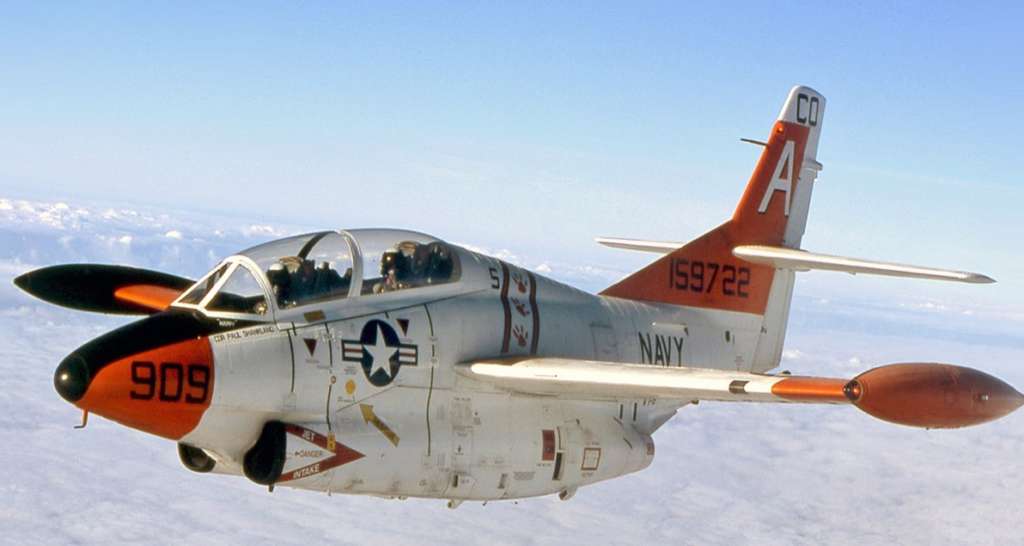
Meeting the Beast:
The whole purpose of advanced jet training was to weed out the students who couldn’t “land on a boat” (land on an aircraft carrier). In late 2000, I finally had my opportunity aboard the USS Eisenhower. Preparing someone to be able to land on an aircraft carrier is a 6-month process, involving dozens of simulator hours and hundreds of practice landings at the field in Meridian, MS, but actually going to sea in an aircraft like this is a daunting task. The night before my first day flying to the boat, I didn’t sleep. Every time I started to doze off I literally had an image of a beast over the horizon, and I would wake up. It was this evening that I realized what a real fear of death felt like. I was less than 24 hours from one of the highest risk activities known to mankind. During the sleepless evening I prayed a few times and I threw up twice. At 5:00 am I decided to get out of bed, eat a power bar and head into the base. It was time to meet the beast. Fear subsided, courage took over, and I got dressed.
After a short brief, we started our jets and headed east out of Jacksonville towards the Eisenhower. By the way, we do this all solo, with no instructor in the back seat. After 15 minutes of flying over the deep blue Atlantic Ocean, I saw what looked like a postage stamp on the horizon. That postage stamp was my runway, and it was moving! After some comms with the tower and a few deep breaths….I brought it. Within a few seconds I was at 400’ on final approach looking at the back of the beast, the back of a nuclear-powered aircraft carrier in the middle of the ocean. I could see her pitching up and down and the violent churn of the wake behind her. It was a surreal moment, but my brain stem power took over and I just did what I was trained to do. I flew the hell out of that jet until I hit the deck of the boat and my tail hook grabbed one of the 4 precious wires. The deceleration of going from 140 mph to 0 mph in just 2 seconds was as violent as you could imagine. My entire body was shoved into the dashboard like a head-on car crash. But this was a textbook landing and I had just become a Naval Aviator! With my knees knocking, I taxied over to the catapult to do this all over again 10 more times. After getting hooked up to the catapult and saluting the deck officer, I was launched from zero to 150 mph in 2 seconds and I was airborne again before I could fully digest the reality of the last 2 minutes. It was an absolutely unbelievable experience and I was officially addicted to flying on and off of aircraft carriers!
Graduation
I graduated #1 from Advanced jet training and actually set a record for having a perfect GPA. The week before graduation, my skipper called me into his office and asked: “So what do you want to fly?” I quickly said, “Tomcats, sir.” The F-14 Tomcat was the star of the 1986 movie TOPGUN and it had been my dream to fly that famous plane since I was 8 years old. Instead, he said, “Well son, there’s a brand-new fighter coming out that you’re eligible for now called the F/A-18E Super Hornet, and you’d be based in California.” I immediately responded, “Count me in sir!”
So, on 23 February 2001 I earned my Wings of Gold, packed up my bags and headed west back to my home state of California. I checked into my new squadron and was ready to take on the world. Little did I know how much the world would change later that year…
